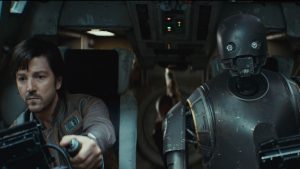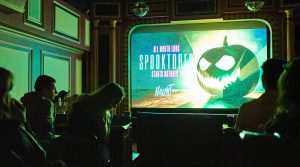
The Super Nintendo Entertainment System, or SNES, is still heralded as one of the greatest consoles that any video game company has ever released. Its legacy is defined by hits within well-known Nintendo franchises like Super Mario, Donkey Kong, Metroid, Kirby, Zelda, and Star Fox.
However, there is a long list of titles that were launched on SNES that acted as tie-ins or adaptations to popular movies and TV series. As was always the case with the jump from screen to console, there were a few duds among the release schedule as studios looked for an easy way to cash in on a familiar property. However, just because there are those video games that players would be best off forgetting, that doesn’t mean there aren’t genuine gems from SNES history. These movie and TV titles, which were released on the Super Nintendo, both captured the essence of their source material and took advantage of the fantastic technology Nintendo had developed.
15. Home Alone (1991)
Developed by Imagineering Inc. and published by Altron, for the SNES, Home Alone actually launched on a huge range of platforms, but the SNES iteration is certainly one of the most notorious. While its sequel failed to capture the essence of what made the first title so fun, Home Alone did manage to capitalize on the success of the titular film and place players inside Kevin’s dangerous life.
The basic premise of the game is to avoid being captured by Harry and Marv, with Kevin setting up and utilizing different traps across the house while exploring its hidden secrets. It’s a simplistic approach to the source material, but one that gets to the heart of the film series rather efficiently. Set in a surprisingly detailed replica of Kevin’s abode, the Christmas vibe is effectively captured with the retro musical accompaniment. Although there’s a repetitiveness to the gameplay (due in large part to the need to continue running around the house hoping not to bump into a bandit), there is a sense of tension that permeates the piece and therefore gives it an edge. The game could definitely do without the weird character cut-outs from Home Alone which take the place of cut scenes, though.
14. Goof Troop (1993)
Developed and published by Capcom, Goof Troop is an often forgotten entry into Disney’s gaming archives, but one that really celebrates the source material it’s based on. Inspired by the animated adventures of Goofy and Max, Goof Troop acts as a whimsical presentation of that absurdist world. The action-adventure video game is both single and multi-player, encouraging a sense of connectivity.
With a plot revolving around a pirate kidnapping and involving a range of familiar faces from Toontown fame, it’s a delightful (but flawed) romp. It’s far from challenging due to its younger target audience and thus some of its puzzles aren’t engaging enough to warrant their inclusion. But the silly enemy types and varied level design offer an experience that players at the time genuinely responded to. Its soundtrack could certainly be more upbeat to match its bizarre antics, but from a graphical perspective, the title is looking to punch above its weight.
13. Jurassic Park (1993)
Developed by Ocean of America and published by Ocean Software, Jurassic Park took gamers straight back into the famous and dangerous attraction, complete with its terrifying dinosaurs and dense environment. The player jumps into the role of Dr. Alan Grant, who must survive through his wit and background as a paleontologist.
The production team made an exciting choice to create two different gameplay perspectives and that’s an effective move. While outside the player controls a top-down camera, once entering a building things switch to a first-person viewpoint. That second display is especially exciting (if technically rough) largely because it enables a variety of jump scares and sudden action sequences. Boosted by a killer soundtrack, it’s fair to say that no amount of dino breakouts can get away from the fact that the exploration of the infamous setting is somewhat dull and is only aided by a temporal sense of danger.
12. The Mask (1995)
Developed and published by Black Pearl Software, The Mask game had a tough task ahead of it. It essentially looked to replicate the whimsical and absurdist performance seen in the Jim Carrey movie while still reflecting the Dark Horse comic series that first introduced the character to the world. Interestingly, that balance was found through a combination of the plot and the visuals.
Although the narrative largely stuck to what viewers had seen in the film, albeit via a simplified version, the graphics were stylized to look more like the comics. The side-scroller action game was pretty straightforward in its combat controls, but the developers made room for a variety of bizarre attack opportunities that made the most of the titular character’s power set. At times, the levels felt too ambitious in their design and execution, but it’s hard to ignore just how fun it was to take on the Mask’s abilities in this cartoonish and exaggerated landscape.
11. Tiny Toon Adventures: Buster Busts Loose! (1993)
Developed and produced by Konami, Tiny Toon Adventures: Buster Busts Loose is inspired by the Looney Tunes TV show of the same name. Players control Buster Bunny across 6 side-scroller action levels, which actually give you choices between various difficulties (a rarity in the genre).
While that option to lower the challenge level (combined with the cartoonish graphics and childish gags) might make this perfect for younger gamers, the sheer range of gameplay scenarios helps this game stand out as an all-ages experience. As a platformer, it’s inventive, fast-paced, incredibly fluid, and most importantly of all, sheer fun! While at stages it may mimic superior titles like Sonic The Hedgehog, Tiny Toon Adventures does deserve to be more of a household name.
10. Mighty Morphin Power Rangers: The Movie (1995)
Developed by Natsume and published by Bandai once more, Mighty Morphin Power Rangers: The Movie acts as a follow-up to the TV-inspired title and an adaptation of the film. However, it should be noted that the game also brought in elements from the show, bridging the gap between the two releases for fans.
The SNES version of the title played in a similar manner to the last entry but was far more polished. With multiplayer options and 6 rangers to choose from, the action felt even more dynamic and chaotic. It’s great to see the title playing into Power Rangers lore, as it really leans into the transformation concept of the regular citizens transforming into these mighty superheroes. While that mechanic really shone here, the title dips a bit in terms of its soundtrack quality and detailed setting design. Regardless, this once again acts as a great entry into the super series that long-time fans will enjoy.
9. Disney’s The Lion King (1994)
Developed by Westwood Studios and Disney Software and published by Virgin Interactive Entertainment, The Lion King is just one small entry into an entire vault’s worth of classic Disney arcade titles. While there are other animated hits on the SNES that surpass it, the whimsicality and energy of The Lion King cannot be overstated. Although the platformer is simple enough in its mechanics, the levels themselves are fairly complex, especially for younger players.
Bright, colorful, and benefiting from a retro soundtrack inspired by the motion picture, fans of the film would feel that on the surface this is a great reflection of the classic. Although at times the gameplay could become tedious because of that difficulty level (and the graphics could be stronger considering the capabilities of the SNES) there is ultimately a reason that this got a modern re-release. It’s nostalgic and delivers quality in crucial areas.
8. X-Men: Mutant Apocalypse (1994)
Developed and produced by Capcom, the video game company had years of comic book storytelling to draw from when first developing the Marvel action title, X-Men: Mutant Apocalypse. However, with the X-Men animated series releasing a few years prior, it was clear that the game tried to balance elements of the TV show and piggyback on its success while combining it with the canon of the source material.
Beloved by critics and featuring a packed roster of playable characters like Beast, Cyclops, Gambit, Wolverine, and Psylocke, the strength of the title was this variety in gameplay styles. The plot might have been pretty basic, but it was a thrill to take on these classic Mutant powers against iconic villains like Magneto. The levels might have been both ambitious and difficult meaning this might not have been perfect for newcomers, but as side-scrollers of this era go, this has aged exceptionally well.
7. Alien 3 (1993)
Developed by Probe Software and published by Acclaim Entertainment, Alien 3 faced the fascinating task of surpassing the movie it was inspired by. After all, Alien 3 isn’t exactly the most beloved entry into the Xenomorph franchise.
However, by taking a run-and-gun approach to the material, the game puts the player in control of the classic protagonist Ripley as she battles her way through a variety of terrifying foes. Although it doesn’t lean into the horror elements of the series quite as well as future releases, its range of weapons and creative level design ensures that the title leans into the lore of the Alien world. There is a lot of originality in the title, from the character animations to the sound design. However, there are plenty of visually uninspired and gray locations that detract from the enjoyment that could have come from a cornucopia of intriguing settings and level designs.
6. Super Star Wars (1992)
Developed again by Sculptured Software and LucasArts but instead published by Nintendo, Super Star Wars was the original hit that inspired a gaming series. It was bold and big in its scale, loosely adapting the plot of the titular movie while varying the gameplay style to give fans a crash course in living in the Star Wars universe.
While Empire Strikes Back had to follow on, Super Star Wars was the originator and with its classic soundtrack, character selection options, and advanced graphics, the run-and-gun platformer really set the bar high. It’s not perfect, but it didn’t try to overcomplicate itself either. More could have been done to make the X-Wing gameplay smoother and Lightsaber combat can be a little too familiar, but there’s no denying the legacy that Super Star Wars has left.
5. The Adventures of Batman & Robin (1994)
Developed and published by Konami, The Adventures of Batman & Robin had the rich history of the DC Comics run and Batman: The Animated Series to get inspired by. What they produced was graphically mesmerizing, capturing the animated show’s unique aesthetic while bringing the comic book-esque Gotham City to life in incredible detail. The sound design might not be to everyone’s taste, and it seems a shame that Robin himself isn’t actually playable.
Nonetheless, the evolution of enemy types throughout the title gives this game an unexpected edge, as players don’t know what they’ll have to defend against next. From genuine vultures to villains like Catwoman and Joker, the superhero skills of the players are really tested. It’s those boss battles that actually take the game to the next level though, with the impressive power sets of the antagonists allowing for some truly wacky sequences.
4. Super Star Wars: Return of the Jedi (1994)
Developed once more by Sculptured Software and LucasArts and again published by JVC Musical Industries, Return of the Jedi was a step up from its Super Star Wars predecessors. Lessons had been learned from the development of those past hits, and thus every aspect of the game was as polished as it could be. Selectable characters are back with 5 playable figures, as were those impressive boss battles and vehicular combat scenarios.
There had been some tweaks to the Force powers in the game, and the level designs didn’t back down in their complexity. But the gameplay was less overwhelming, the sound design was better than ever, and this is the most gorgeous entry in the series. The debate will rage on about which is truly the best of the series, but Return of the Jedi feels like a culmination of years of development.
3. The Magical Quest Starring Mickey Mouse (1992)
Developed and published by Capcom, alongside Nintendo and Disney Interactive, The Magical Quest Starring Mickey Mouse is a classic example of an underrated gem that will hold fond memories for some but has largely been lost to time. Somehow, this Mickey-centric story hasn’t had the impact of other SNES Disney titles, but it’s well worth a revisit.
Inspired by the cartoons that feature the titular Walt Disney creation, there’s only one word to really describe this adventure: chaotic. The fun of the first entry into the Magical Quest series is the way it launches into bizarre and unexpected new sequences. The platformer pays homage to many of Disney’s past cinematic outings, and it doesn’t rely on its basic controls for long. From flying a carpet to blasting water at a fiery enemy, there’s no telling what players will have to do to ultimately take down Pete!
2. Disney’s Aladdin (1993)
Developed and published by Capcom, of all the Disney SNES titles Aladdin probably still holds the award for being the best and brightest. It’s energetic, thrilling, challenging, and rewarding. There’s perhaps no better soundtrack in retro gaming and the graphics are truly outstanding. The SNES title captures Agrabah so effectively and gets inventive in the way it designs its level around the living, breathing location.
Aladdin has been rereleased on current-gen platforms because of its connection to the audience which was partially built by its commitment to honoring its source material. Indeed, the game heavily relies on its characters and movie-based mechanics, never shying away from flying carpets, magical genies, and sinister sorcerers. It’s perhaps the choice to simply adapt the general story and insert new action sequences that really allow the game to own its territory so expertly.
1. Teenage Mutant Ninja Turtles: Turtles in Time (1992)
Developed and published by Konami, there’s rarely a debate about the quality of Teenage Mutant Ninja Turtles: Turtles in Time. The beat-em-up arcade title made its way to SNES and didn’t disappoint in how it made that jump between platforms with additional levels and new gameplay modes. The title had always been a great co-op experience, and with time travel elements and classic TMNT humor baked into the narrative, it was off to a flying start.
Inspired by the various on-screen adaptations and the original comics, what the game does best is really adapt the key characters with integrity and style. With unique animations and a sense of individuality between each hero, the game was at its best when players ran through varying enemy types with charismatic ease. From the music to the visuals everything about Turtles in Time is extremely well-polished. The 1992 title set the bar and few others can compare.
The post Best SNES Games Based On Movies & TV Shows appeared first on Den of Geek.







